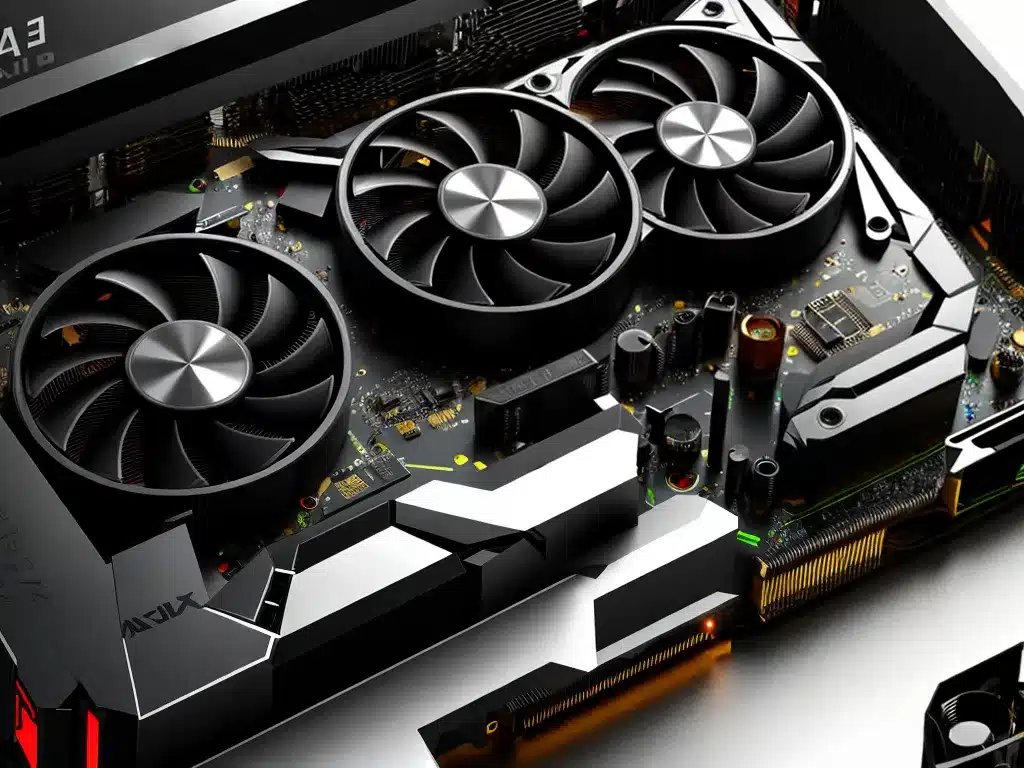
Introduction
Graphics cards are a crucial component of any computer system, especially for gaming, video editing, 3D modeling, and other graphics-intensive tasks. In recent years, artificial intelligence (AI) has been applied to graphics cards to optimize performance dynamically based on workload. AI-powered graphics cards can adjust clock speeds, power consumption, and other parameters on the fly to improve frame rates and overall efficiency. In this article, I will provide an in-depth look at how these new AI graphics cards work and the benefits they provide.
How AI Graphics Cards Work
Traditional graphics cards rely on predefined profiles that set performance levels based on the application being used. However, these static profiles are not optimal, as the demands on the GPU can change dynamically within applications.
AI graphics cards take a different approach by using deep learning algorithms to observe workloads in real-time and adjust parameters accordingly to maximize performance and efficiency. Here are some key ways these AI algorithms optimize the card:
Dynamic Clock Speed Adjustment
The AI monitors the frame rate and GPU utilization and alters the graphics card’s clock speed to reach optimal levels. Raising the clock speed boosts performance during intensive gaming or rendering tasks. The AI will lower the clock speed during less demanding periods to reduce power draw and heat output.
Fine-TuningVoltage
The voltage supplied to different GPU components impacts power consumption and overclocking headroom. The AI algorithms dynamically tune the voltages to enable higher clock speeds when possible and reduce voltage when not needed.
Optimizing Workload Distribution
AI graphics cards can shift workloads between GPU cores to prevent bottlenecks and maximize throughput. If one GPU core is maxed out while others are available, the AI will redistribute tasks accordingly.
Predictive Power Management
The AI collects data on GPU workloads over time and uses this to predict optimal power states. It can proactively raise or lower clock speeds right before workload changes occur to avoid performance dips. The AI essentially learns your normal usage patterns.
Benefits of AI Graphics Cards
Intelligent graphics cards optimized by AI provide significant benefits, including:
-
Higher frame rates – By maximizing GPU utilization at all times, AI cards push average FPS higher during games and applications.
-
Lower power consumption – Efficient workload distribution and voltage adjustments substantially reduce power draw.
-
Cooler and quieter operation – Optimized voltages and clocks mean the GPU produces less heat, allowing the fans to spin slower.
-
Higher overclocking potential – Dynamic voltage tuning enables higher stable overclocks compared to manual overclocking.
-
Longer GPU lifespan – The AI prevents unnecessary voltage and power to the GPU which reduces wear over time.
-
Plug-and-play simplicity – AI optimization occurs automatically without any configuration required by the user.
Real World Examples
Nvidia and AMD both offer graphics cards with AI-enhanced performance. Here are some examples:
Nvidia RTX 30 Series GPUs
Nvidia RTX 30 series GPUs utilize Deep Learning Super Sampling (DLSS) to boost frame rates in games using AI. DLSS uses a neural network trained on high resolution images to intelligently upscale lower resolution renders without loss of quality. This lightens the load on the GPU significantly.
AMD RX 6000 Series GPUs
AMD RX 6000 GPUs leverage Radeon Boost with AI acceleration to dynamically adjust resolution to maintain high FPS during fast motion gaming. Lower resolutions are rendered when needed to avoid wasted frames.
Intel Arc GPUs
Intel’s upcoming Arc discrete GPUs will use Deep Link technology powered by AI to optimize workloads across CPUs and GPUs. The AI coordinates sharing of assets between processors to reduce duplication and latency.
Conclusion
AI-enhanced graphics cards alter the paradigm of PC gaming and workstation graphics performance. With AI handling optimization automatically, users benefit from higher frames, lower power draw, cooler thermals, and quieter acoustics with little to no manual configuration required. As AI training continues to improve, so too will the performance and efficiency of these intelligent GPUs. Clearly, AI-powered graphics cards represent an exciting future for computer graphics and visualization technologies.












